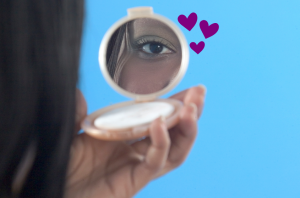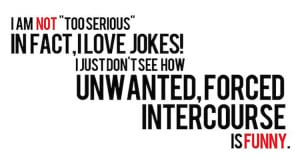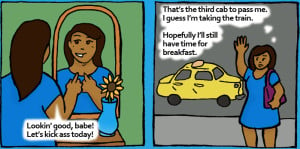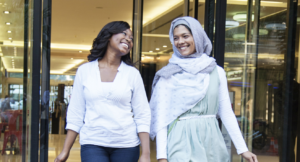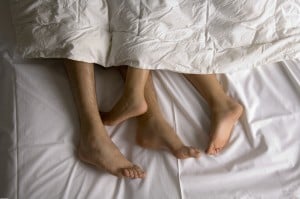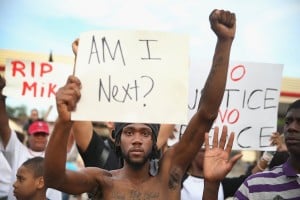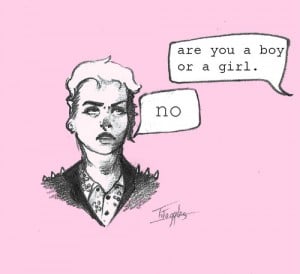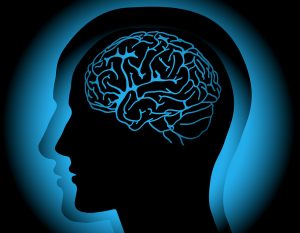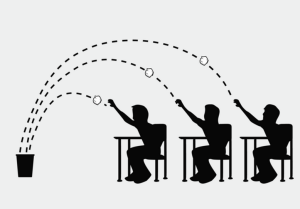I have vaguely mentioned my liposuction surgery in other posts, but I’ve never really delved into it until now.
When I was 23, I had 11 pounds of fat removed from my stomach, hips, and thighs. I had the surgery done in the Philippines, where my parents were working for two years.
It was the summer of 1998. I recall my father first mentioning to me how inexpensive it was to have plastic surgery done in Manila, and my heart skipped a beat at the thought of thin thighs. He kept hinting at it until I pressed him for more information on the procedure.
I probably weighed around 230 pounds at that time, and my self-esteem was in the crapper. (FYI: I weigh about the same now).
I had zero self-love and I was desperate. I really just wanted to feel desirable and beautiful. And at the time, that translated to thin.
How It All Started
I grew up in a loving home with parents who did the best they could with the tools they had.
But let’s be honest, the baby boomer generation didn’t have the best set of skills to cope with a daughter who was showing signs of depression and an eating disorder at age twelve.
In fact, I’m not sure either of us knew what an eating disorder was at that time.
What I did know, however, was that the messages I got at home around food and body size were very confusing.
My father, who was born in Italy during WWII, a time of real scarcity, belonged to the school of thought that you ate everything on your plate and you didn’t leave the table until it was finished – even if you were full.
Some of my earliest memories were around food. My parents love to tell the story of when I was two years old, how I’d stand in front of the refrigerator, waiting for someone to walk by. At which point I would declare “Some moa! Some moa!” in hopes of getting a sugary snack.
It usually worked. I was really cute.
But later, there were public shamings at the dinner table. My parents would express their utter disdain for the amount of food I’d piled on my plate.
It was way too much to eat for someone my size, but I knew I would have to eat all of it, and that was a comfort.
The food helped me numb out from the family chaos that began erupting in my early adolescence (alcoholism, drug use, verbal abuse, etc.).
And while the shaming hurt, but the food always made the pain go away. It was my only coping mechanism at the time, and in many ways I’m grateful for it.
I also have a mother who loves to cook decadent dishes in abundance. The setting was ripe for having a complicated relationship with food.
Furthermore, with two parents who struggled with their own undiagnosed eating disorders and projected that on me, my early lessons around food where inconsistent and baffling.
It began a cycle of self-doubt and body dysmorphia that would last more than two decades.
At age 12, I got my period and puberty hit me hard. I was ill prepared for the breasts that had begun growing in place of my flat chest. I recall walking around with my shoulders hunched over, hoping I could hide my new “gifts” as I navigated the cluster-fuck that is junior high.
I can still hear my mother’s native Boston accent telling me to “stand up straight, girl. What’s wrong with you?”
There was a lot wrong.
I was a shy, moody kid, going through puberty, whose relationship with food was confusing at best.
My best friend was thin, athletic, with light tan skin and thick wavy hair. I could not stop comparing my large thighs with my friend’s lithe ones. Surely that was the reason the boys favored her over me.
The truth is, I was adorable. But I couldn’t see it when my family, peers, and the media were instilling in me the idea that a small body was the solution to most of life’s problems.
Like most girls my age living in the USA, I also started to read Seventeen Magazine and other publications featuring thin, white, blonde, bikini-clad girls who couldn’t look less like me if they tried. The pages were filled with diet tips and advice on how to get hot guys.
It was then that my self-esteem and body image took a deep nose dive.
I became obsessed with dieting and getting thin.
But at the time, I thought I had no willpower, which caused me to become depressed, introverted, and increasingly bigger.
I know now that “willpower” is an oppressive word used by the media to shame us into conforming our bodies, desires, and behaviors into this tiny little box called social normativity.
And in the brief periods of attaining my “goal weight,” I still seemed to be depressed. My burgeoning perfectionism was of no help.
The Surgery
So, when plastic surgery was offered to me, it seem like the answer to every problem I’d ever had. In one fell swoop it would rid me of the fat I hated, making me more attractive to a society (and a family) that had been dissing my body for years.
In the days leading up to my surgery, my father threatened to not pay for the liposuction. He wanted to make sure I was going to commit to losing more weight afterwards.
He thought he was being helpful with the threat — that it would somehow motivate me to take any steps necessary to keep the weight off. I was shamed yet again. All my hopes in this life-changing surgery were about to be dashed.
How could he threaten to take away the very thing I’d always hoped would make me happy?
In the end, he paid for the surgery. I remember waking up in the hospital bed wrapped in layers of gauze, alarmed at the amount of pain I was in. My father stood at my bedside, gleaming, telling me they’d sucked 11 pounds of fat out of my body.
All I could think was, I wished they’d sucked more out.
It took my body many weeks to heal. Plastic surgery is real surgery. My body was altered permanently, which at the time, seemed like a good thing. But it would catch up with me years later.
Life After Surgery
In the months following the surgery, I moved to NYC to study interior design at FIT. I walked everywhere and the weight came off quickly. I went down to about 160 pounds, 70 pounds down from my pre-surgery weight.
And although I enjoyed the thin privilege of shopping for clothes in mainstream stores, my self-esteem was not improved.
You see, I thought I was taking a shortcut to self-love by having liposuction.
I honestly believed that having a smaller body would magically make me a happy and fulfilled person. So when it didn’t happen, I was devastated.
Further, NY was a lonely place for me, and I resumed eating to numb the pain – much as I had been doing since age twelve.
When I left with my design degree in hand two years later to head back to my hometown of DC, I had put on some of the weight I’d lost.
My struggle with body image only got worse in the years following my surgery. I hadn’t dealt with the real reason I wasn’t happy with myself. I could not fathom the idea that I could be fat and still be worthy.
The compulsive dieting went on for years and years, well into my thirties. It wasn’t until I found 12-step programs that I learned to find acceptance in my body. That, and lots of therapy and self-reflection.
I think plastic surgery is a personal decision that people make for various reasons. And if you’re considering it, please do your research and think about why you’re doing it.
There are many days that I regret having had it because I still have scars and a lower stomach that is uneven because my surgeon botched the job (I might qualify for the show Botched. Okay, not really).
But then I remember that all these life decisions are what make us who we are.
Perhaps if I hadn’t had the surgery, and the experience of being thin and unhappy, I wouldn’t be where I am today.
The Road to Recovery
My recovery began with tiny steps and some relapses. In my mid-thirties I came to a place where I was sick and tired of being sick and tired. I no longer had the energy to wake up each morning thinking about what I was going to eat, and how I was going to disguise my body in oversized clothing.
But I also knew I couldn’t get better alone.
I dove deep into two years of therapy where I dealt with some of the most painful parts of my life. I cried, I forgave, and I healed. I was simultaneously attending Overeater’s Anonymous meetings and working with a sponsor to get a handle on my compulsive overeating.
I believe it was these two commitments that saved me from the depths of eating disorder hell and suicide.
My progress was slow. But there was no going back for me. I wanted freedom from the decades of anguish. I wanted to lie on the beach in a swimsuit and bask in the glory of the sun, oblivious to anything but my own pleasure.
I learned to stop dieting. I discovered that I was addicted to diets and negative thinking, even though they caused me pain. After much writing, listening, and sharing, I understood to my core, that dieting no longer served any positive purpose in my life. In the twenty plus years of my experiments with them, none of them had ever worked in the long term.
Abandoning diets was the one thing I was fully committed. And even though I have gained weight since then, I feel so much more at home in this fat body than I ever did when I was thin and dieting. This was a key moment in my recovery. I no longer equated happiness with thinness.
But I needed to do more. I needed to build a moat to protect myself from backsliding into body-obsession hell.
With a talent for writing, I decided to start a blog about my challenges with body-image and self-esteem. I knew from talking to so many women who had struggled with eating disorders and negative body image, that there was room for my voice and for healing. Not just for me, but for them too.
It’s been over four years since I started my blog and committed to stop dieting. I have felt freedom from the mental anguish of analyzing every morsel I put into my mouth.
I learned that it’s okay to eat – I’m entitled as a living, breathing, human being.
I began to have days and weeks of looking in the mirror and getting comfortable with the image reflected back to me. I began to wear clothes that pushed me outside my comfort zone. And most importantly, I had begun to surround myself with a supportive group of body-loving women – both online and in person.
To this day, that community is what helps to sustain me and motivate me to fight against the hideous body-shaming messages we are bombarded with every day.
Life is full of lessons, some more painful and persistent than others.
When I look at my scars and my oddly-shaped tummy, I am witness to the many years of self-hatred that I’ve had to let go. When I put pen to paper – or rather fingers to keyboard – my truth spills out onto the page for the world to see. All my pains and struggles, all my joys and successes, are no longer trapped inside of me.
When I share, I am free. And I wouldn’t have it any other way.
Today I am stronger, wiser, kinder, and more compassionate with myself. I am learning every day the perils of perfectionism, and moving courageously forward, sharing my story with anyone who cares to listen.
I urge you to the lift the veil of your own past pains and to face them head on.
It’s hard fucking work, but freedom is on the other side of fear.
Be bold.
[do_widget id=’text-101′]
Pia Schiavo-Campo is a fat feminist, writer, and author of the blog Chronicles of a Mixed Fat Chick. Her agenda includes extinguishing conventional notions of beauty and empowering women to take up as much space as they damn well please. She has written many articles on the subject of body image and self-acceptance, which have earned her a place as a valuable voice in the movement. Pia is half Black and half Italian, speaks Italian fluently, and lives in Los Angeles her awesome husband, Will.
Search our 3000+ articles!
Read our articles about:
Our online racial justice training
Used by hundreds of universities, non-profits, and businesses.
Click to learn more
Most Read Articles
- « Previous
- 1
- …
- 30
- 31
- 32


